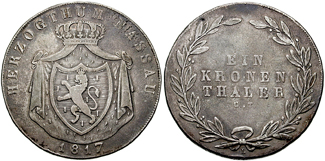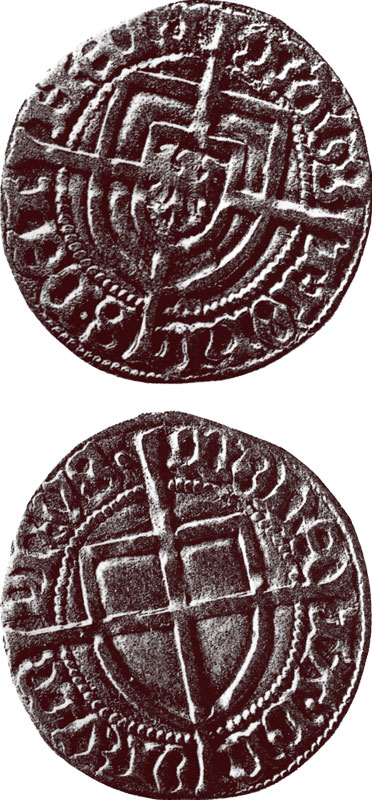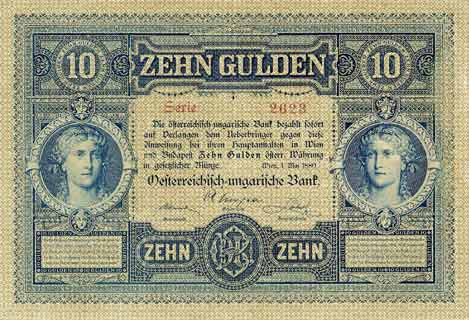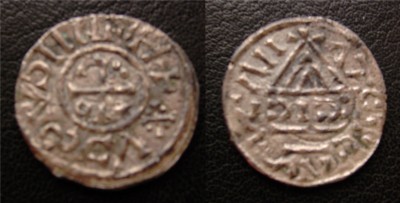|
Kreuzer
The Kreuzer (), in English usually kreutzer ( ), was a coin and unit of currency in the southern German states prior to the introduction of the German gold mark in 1871/73, and in Austria and Switzerland. After 1760 it was made of copper. In south Germany the ''kreuzer'' was typically worth 4 ''pfennigs'' and there were 60 ''kreuzers'' to a ''gulden''. Early history The ''kreuzer'' goes back to a '' groschen'' coin minted in Merano in South Tyrol in 1271 (the so-called ''Etscher Kreuzer''). Because of the double cross (German: ''Kreuz'') on the face of the coin, it was soon given the name ''Kreuzer''. It spread in the 15th and 16th centuries throughout the south of the German-speaking area. The Imperial Coinage Act of 1551 made them the unit for small silver coins. In 1559 a value of 60 ''kreuzer'' to 1 ''gulden'' had been adopted throughout the southern states of the Holy Roman Empire, but the northern German states declined to join, and used '' groschen'' instead of ''kreu ... [...More Info...] [...Related Items...] OR: [Wikipedia] [Google] [Baidu] |
Groschen
Groschen (; from la, grossus "thick", via Old Czech ') a (sometimes colloquial) name for various coins, especially a silver coin used in various states of the Holy Roman Empire and other parts of Europe. The word is borrowed from the late Latin description of a tornose, a ''grossus denarius Turnosus,'' in English the "thick denarius of Tours". Groschen was frequently abbreviated in old documents to ''gl'', whereby the second letter was not an '' l'' (12th letter of the alphabet), but an abbreviation symbol; later it was written as ''Gr'' or ''g''. Names and etymology The name was introduced in 13th-century France as ', lit. "thick penny", whence Old French ', Italian ', Middle High German ', Low German and Dutch ' and English '' groat''. In the 14th century, it appeared as Old Czech ', whence Modern German '. Names in other modern European languages include: * sq, grosh * Church Slavonic-derived languages: Bulgarian, Macedonian, Russian and Serbo-Croatian ('), Ukr ... [...More Info...] [...Related Items...] OR: [Wikipedia] [Google] [Baidu] |
South German Gulden
The South German Gulden was the currency of the states of southern Germany between 1754 and 1873. These states included Bavaria, Baden, Württemberg, Frankfurt and Hohenzollern. It was divided into 60 kreuzer, with each kreuzer worth 4 pfennig or 8 heller. History This specific ''Gulden'' was based on the '' Gulden'' or ''florin'' used in the Holy Roman Empire during the Late Middle Ages and Early Modern period. The ''Gulden'' first emerged as a common currency of the Holy Roman Empire after the 1524 '' Reichsmünzordnung'' in the form of the ''Guldengroschen''.Shaw (1896), p. 364: Imperial Mint Ordinance of 1524 defines a silver piece = 1 Rhenish gold gulden. On p 363: the silver equivalent of the guld gulden... received the name gulden groschen. In the succeeding centuries the ''Gulden'' was then defined as a fraction of the ''Reichsthaler'' specie or silver coin. As of 1690 the ''Gulden'' used in Southern Germany and the Austrian Empire adhered to the Leipzig standard, w ... [...More Info...] [...Related Items...] OR: [Wikipedia] [Google] [Baidu] |
Groschen
Groschen (; from la, grossus "thick", via Old Czech ') a (sometimes colloquial) name for various coins, especially a silver coin used in various states of the Holy Roman Empire and other parts of Europe. The word is borrowed from the late Latin description of a tornose, a ''grossus denarius Turnosus,'' in English the "thick denarius of Tours". Groschen was frequently abbreviated in old documents to ''gl'', whereby the second letter was not an '' l'' (12th letter of the alphabet), but an abbreviation symbol; later it was written as ''Gr'' or ''g''. Names and etymology The name was introduced in 13th-century France as ', lit. "thick penny", whence Old French ', Italian ', Middle High German ', Low German and Dutch ' and English '' groat''. In the 14th century, it appeared as Old Czech ', whence Modern German '. Names in other modern European languages include: * sq, grosh * Church Slavonic-derived languages: Bulgarian, Macedonian, Russian and Serbo-Croatian ('), Ukr ... [...More Info...] [...Related Items...] OR: [Wikipedia] [Google] [Baidu] |
Conventionsthaler
The ''Conventionstaler'' or ''Konventionstaler'' ("Convention ''thaler''"), was a standard silver coin in the Austrian Empire and the southern German states of the Holy Roman Empire from the mid-18th to early 19th-centuries. Its most famous example is the Maria Theresa thaler which is still minted today. The ''Conventionsgulden'' was equivalent to a ''Conventionsthaler''. History The Austrian Empire introduced the Convention currency standard in 1754 to replace the Leipzig standard of 1690, after a drop in the gold-silver price ratio from 15 to 14.5 in the 1730s unleashed a flood of cheaper ''thalers'' defined in gold. The Leipzig standard defined the North German thaler currency unit at the ''Reichsthaler'' specie of 25.984 g, or 19.488 g fine silver. In contrast, in 1741 the gold Friedrich d'or pistole of 6.05 g fine gold was issued for 5 ''thalers''. This resulted in a cheaper Thaler Gold worth 1.21 g fine gold or 1.21 x 14.5 = 17.545 g fine silver. The ''Conventionstha ... [...More Info...] [...Related Items...] OR: [Wikipedia] [Google] [Baidu] |
Vereinsthaler
The Vereinsthaler (, ''union thaler'') was a standard silver coin used in most German states and the Austrian Empire in the years before German unification. The Vereinsthaler was introduced in 1857 to replace the various versions of the North German thaler, many of which were already set at par with the Prussian thaler. While the earlier Prussian Thaler was slightly heavier at th a Cologne mark of fine silver (16.704 grams), the Vereinsthaler contained grams of silver, which was indicated on the coins as one thirtieth of a metric pound (Pfund, equal to 500 grams). Distribution The Vereinsthaler was used as the base for several different currencies. In Prussia and several other northern German states, the Vereinsthaler was the standard unit of account, divided into 30 Silbergroschen, each of 12 Pfennig. See Prussian Vereinsthaler. In Saxony, the Neugroschen was equal to the Prussian Silbergroschen but was divided into 10 Pfennig. See Saxon Vereinsthaler. Some other ... [...More Info...] [...Related Items...] OR: [Wikipedia] [Google] [Baidu] |
Austro-Hungarian Florin
The florin (german: Gulden, hu, forint, hr, forinta/florin, cs, zlatý) was the currency of the lands of the House of Habsburg between 1754 and 1892 (known as the Austrian Empire from 1804 to 1867 and the Austro-Hungarian Monarchy after 1867), when it was replaced by the Austro-Hungarian crown as part of the introduction of the gold standard. In Austria, the florin was initially divided into 60 kreutzers (german: Kreuzer, hu, krajcar, hr, krajczár cs, krejcar). The currency was decimalized in 1857, using the same names for the unit and subunit. Name The name ''Gulden'' was used on the pre-1867 Austrian banknotes and on the German language side of the post-1867 banknotes. In southern Germany, the word Gulden was the standard word for a major currency unit. After 1867 Austrian coins used the name ''Florin''. "Florin" is derived from the city of Florence, Italy where the first florins were minted, from 1252 to 1533. History The florin (German: ''Gulden'') first emerged a ... [...More Info...] [...Related Items...] OR: [Wikipedia] [Google] [Baidu] |
Pfennig
The 'pfennig' (; . 'pfennigs' or ; symbol pf or ₰) or penny is a former German coin or note, which was the official currency from the 9th century until the introduction of the euro in 2002. While a valuable coin during the Middle Ages, it lost its value through the years and was the minor coin of the Mark currencies in the German Reich, West and East Germany, and the reunified Germany until the introduction of the euro. Pfennig was also the name of the subunit of the Danzig mark (1922–1923) and the Danzig gulden (1923–1939) in the Free City of Danzig (modern Gdańsk, Poland). Overview Name The word ''Pfennig'' (replacing the ''denarius'' or ''denarius'' as a low-denomination silver coin) can be traced back to the 8th century and also became known as the ''Penning'', ''Panni(n)g '', ''Pfenni(n)c'', ''Pfending'' and by other names, e.g. in Prussia until 1873, ''Pfenning''. The ''-ing''- or ''-inc'' suffix was used, in addition to ''-ung'', the formation of ... [...More Info...] [...Related Items...] OR: [Wikipedia] [Google] [Baidu] |
Pfennig
The 'pfennig' (; . 'pfennigs' or ; symbol pf or ₰) or penny is a former German coin or note, which was the official currency from the 9th century until the introduction of the euro in 2002. While a valuable coin during the Middle Ages, it lost its value through the years and was the minor coin of the Mark currencies in the German Reich, West and East Germany, and the reunified Germany until the introduction of the euro. Pfennig was also the name of the subunit of the Danzig mark (1922–1923) and the Danzig gulden (1923–1939) in the Free City of Danzig (modern Gdańsk, Poland). Overview Name The word ''Pfennig'' (replacing the ''denarius'' or ''denarius'' as a low-denomination silver coin) can be traced back to the 8th century and also became known as the ''Penning'', ''Panni(n)g '', ''Pfenni(n)c'', ''Pfending'' and by other names, e.g. in Prussia until 1873, ''Pfenning''. The ''-ing''- or ''-inc'' suffix was used, in addition to ''-ung'', the formation of ... [...More Info...] [...Related Items...] OR: [Wikipedia] [Google] [Baidu] |
Silver Coins
Silver coins are considered the oldest mass-produced form of coinage. Silver has been used as a coinage metal since the times of the Greeks; their silver drachmas were popular trade coins. The ancient Persians used silver coins between 612–330 BC. Before 1797, British pennies were made of silver. As with all collectible coins, many factors determine the value of a silver coin, such as its rarity, demand, condition and the number originally minted. Ancient silver coins coveted by collectors include the Denarius and Miliarense, while more recent collectible silver coins include the Morgan Dollar and the Spanish Milled Dollar. Other than collector's silver coins, silver bullion coins are popular among people who desire a " hedge" against currency inflation or store of value. Silver has an international currency symbol of XAG under ISO 4217. Origins and early development of silver coins The earliest coins in the world were minted in the kingdom of Lydia in Asia Minor around 6 ... [...More Info...] [...Related Items...] OR: [Wikipedia] [Google] [Baidu] |
Polish Language
Polish (Polish: ''język polski'', , ''polszczyzna'' or simply ''polski'', ) is a West Slavic language of the Lechitic group written in the Latin script. It is spoken primarily in Poland and serves as the native language of the Poles. In addition to being the official language of Poland, it is also used by the Polish diaspora. There are over 50 million Polish speakers around the world. It ranks as the sixth most-spoken among languages of the European Union. Polish is subdivided into regional dialects The term dialect (from Latin , , from the Ancient Greek word , 'discourse', from , 'through' and , 'I speak') can refer to either of two distinctly different types of linguistic phenomena: One usage refers to a variety of a language that is a ... and maintains strict T–V distinction pronouns, Honorifics (linguistics), honorifics, and various forms of formalities when addressing individuals. The traditional 32-letter Polish alphabet has nine additions (''ą'', ''ć'', ... [...More Info...] [...Related Items...] OR: [Wikipedia] [Google] [Baidu] |
Romanian Language
Romanian (obsolete spellings: Rumanian or Roumanian; autonym: ''limba română'' , or ''românește'', ) is the official and main language of Romania and the Republic of Moldova. As a minority language it is spoken by stable communities in the countries surrounding Romania (Bulgaria, Hungary, Serbia, and Ukraine), and by the large Romanian diaspora. In total, it is spoken by 28–29 million people as an L1+ L2, of whom 23–24 millions are native speakers. In Europe, Romanian is rated as a medium level language, occupying the tenth position among thirty-seven official languages. Romanian is part of the Eastern Romance sub-branch of Romance languages, a linguistic group that evolved from several dialects of Vulgar Latin which separated from the Western Romance languages in the course of the period from the 5th to the 8th centuries. To distinguish it within the Eastern Romance languages, in comparative linguistics it is called '' Daco-Romanian'' as opposed to its closest ... [...More Info...] [...Related Items...] OR: [Wikipedia] [Google] [Baidu] |
Serbocroatian Language
Serbo-Croatian () – also called Serbo-Croat (), Serbo-Croat-Bosnian (SCB), Bosnian-Croatian-Serbian (BCS), and Bosnian-Croatian-Montenegrin-Serbian (BCMS) – is a South Slavic language and the primary language of Serbia, Croatia, Bosnia and Herzegovina, and Montenegro. It is a pluricentric language with four mutually intelligible standard varieties, namely Serbian, Croatian, Bosnian, and Montenegrin. South Slavic languages historically formed a continuum. The turbulent history of the area, particularly due to expansion of the Ottoman Empire, resulted in a patchwork of dialectal and religious differences. Due to population migrations, Shtokavian became the most widespread dialect in the western Balkans, intruding westwards into the area previously occupied by Chakavian and Kajkavian (which further blend into Slovenian in the northwest). Bosniaks, Croats and Serbs differ in religion and were historically often part of different cultural circles, although a large part ... [...More Info...] [...Related Items...] OR: [Wikipedia] [Google] [Baidu] |










